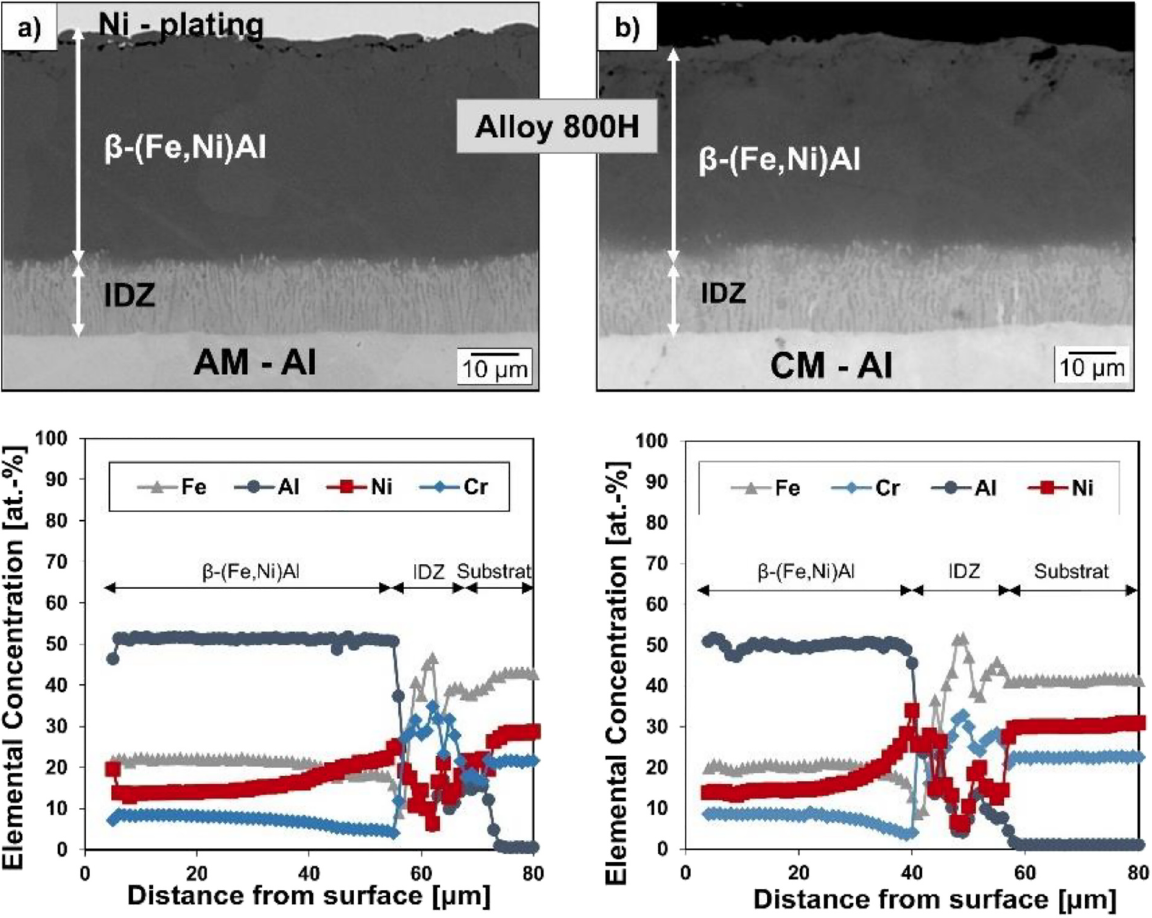A. Kulig, C. Oskay, L. Mengis, B. Nowak,, M.C. Galetz, U. Glatzel, H. Daoud
Surface and Coatings Technology 494 (2024), 131493, DOI: 10.1016/j.surfcoat.2024.131493

Laser powder bed fusion (PBF-LB/M) is used in various industries to manufacture complex parts with high precision. High surface roughness and porosity have a negative impact on fatigue resistance. This work presents aluminum pack cementation as a method to reduce surface roughness and improve fatigue resistance of AM parts. An Fe-base alloy (Alloy 800H) and a Ni-base alloy (Alloy 699XA) are selected. Some of the specimens made from PBF-LB/M were treated by pack cementation with aluminum, while others were subjected to the vibratory finishing process. The surface roughness, microhardness distribution and the microstructure of the interface zone were measured and analyzed for the as-built, vibratory finished and aluminized specimens. Rotating bending fatigue test was performed at room temperature. Conventionally fabricated specimens of both investigated alloys were tested under the same conditions to evaluate the effects of pack cementation. The aluminized samples (PBF-LB/M) show a significant reduction in surface roughness with a decrease of 45 % for Alloy 800H and 65 % for Alloy 699XA. This leads to an improvement in fatigue life for both Alloy 800H and Alloy 699XA. In contrast, the conventionally fabricated specimens exhibited increased surface roughness after pack cementation compared to their initial condition and showed a significant reduction in fatigue resistance.
